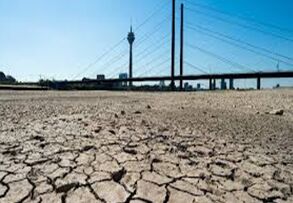研究表明 高温让世界更危险
|
On excessively hot days, there are more likely to be fatal car accidents and food safety problems, and police officers and government food inspectors tend to do less of their duties, according to a study published in the Proceedings of the National Academy of Sciences. The Massachusetts Institute of Technology scientists, who analyzed data from across the United States, suggest that if the climate continues to change, by 2050 -- and in another 50 or so years beyond that -- our world may be less safe than it is today.
"The crux of the idea -- which is that weather affects how we perform our duties and how we go about our daily lives and the risks that we experience -- is indeed simplistic," said Nick Obradovich, co-author of the study and a research scientist at MIT's Media Lab. What is not at all simple is that he and his colleagues used a "massive amount of data" to understand how temperature affects crucial government work, and this is the "first time, to our knowledge, that's been done." "Hot temperatures are basically bad for human functioning," Obradovich said. This is the case across "a broad suite of things" that scientists have studied: Sleep quality, mood, mental health, risk of suicide and work productivity are all "harmed by hot temperatures." So, do hot temperatures harm government workers' ability to do their jobs? Obradovich and his colleagues analyzed data from more than 70 million police stops between 2000 and 2017 and more than 500,000 fatal motor vehicle crashes between 2001 and 2015. They also looked at nearly 13 million food safety violations (for restaurants and food production facilities) recorded across more than 4 million inspections between 2012 and 2016. The probability of an inspection being done decreases beyond a maximum temperature of 26° Celsius (nearly 79° Fahrenheit), according to the researchers. Scaled across 750,000 total facilities, approximately 8,000 fewer would be inspected per day in the range of 30° C to 40° C (86° F to 104° F), the authors estimated. The data also showed that when facilities are inspected, "the number of violations a facility has goes up with temperature," Obradovich said; this is probably due to the fact that higher temperatures pose a greater risk to food safety because pathogens, including E. coli and salmonella, replicate faster in warmer temperatures. A similar picture emerged when the researchers examined traffic accidents and policing. "What you see is that fatal crash incidence goes up in hot temperatures," Obradovich said. Here, an average temperature range of 30° C to 40° C (or 86° F to 104° F) produces an amplified risk of fatal car crashes of half a percentage point, the study finds. "It also goes up in particularly cold temperatures, but you see a sharper increase in the hot temperature range," he said. The results show that police stops decline after a maximum temperature of 29° C (84° F). So in the range of 30° C to 40° C (86° F to 104° F) police stops are reduced by about 1.5%, according to the researchers. In short, the effort made by public safety workers and government regulators declines at the time of greatest risk. |









